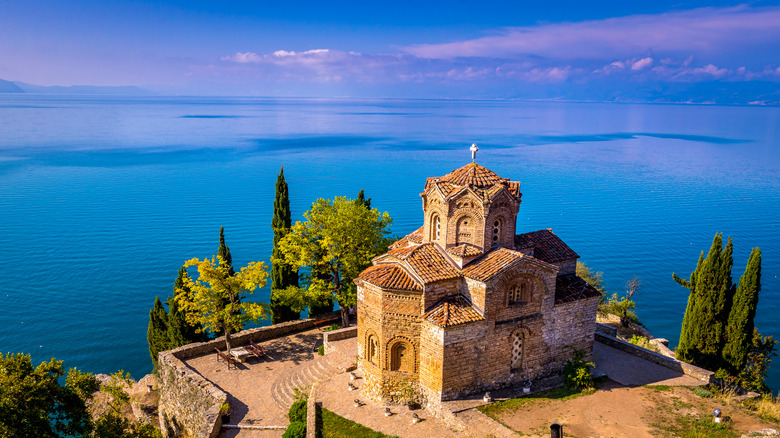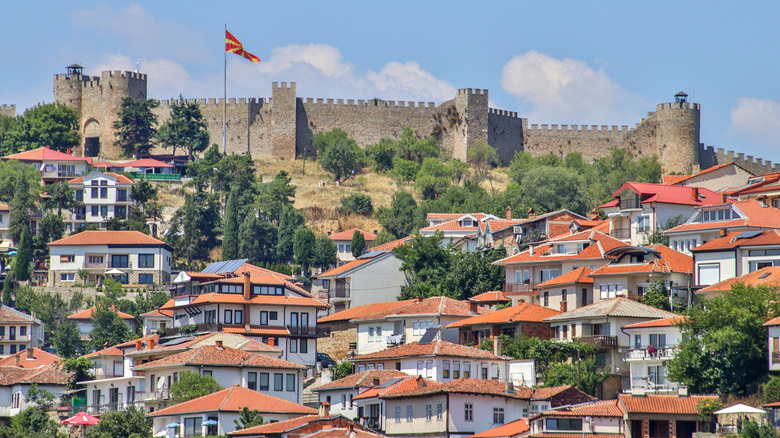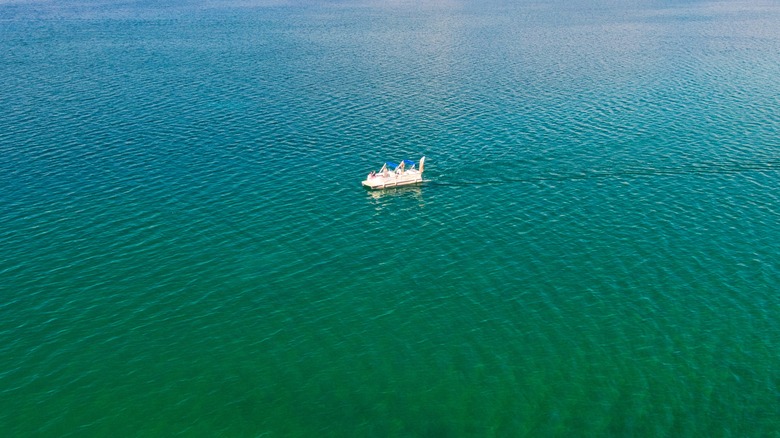Europe's Oldest Lake Is An Under-The-Radar Destination With Clear Water And Panoramic Views
The crystal clear water, fresh mountain air, and affordability of Lake Ohrid have been steadily attracting more visitors, but North Macedonia is still relatively unknown compared to its neighbor to the south, Greece. North Macedonia received over 1 million visitors in 2023 — that's an increase over 2022 but nothing compared to Greece's 32.7 million. But popularity doesn't always indicate quality, and judging from how foreign visitor arrivals are far outpacing the growth of domestic travel, word is definitely spreading about North Macedonia's bona fides as a tourist destination.
The country is home to Europe's oldest lake, Lake Ohrid, which North Macedonia also shares with the equally underrated Albania. Lake Ohrid is not huge by global standards (Lake Superior is 350 miles long compared to Ohrid's 19 miles), but the lake's age and biology make it special. Since North Macedonia is a landlocked country surrounded by Bulgaria, Kosovo, Serbia, Albania, and Greece, the lake is a welcome source of fresh water (and aquatic recreation) in the region.
The town of Ohrid is a two- to three-hour drive from North Macedonia's capital, Skopje. The international airport there receives flights from major carriers including Lufthansa and Swiss Air, though there are no direct flights to Skopje from the United States. But if you're looking for an adventure — specifically an affordable and under-the-radar European getaway — consider traveling to Ohrid to enjoy some culture, good food, and that beautiful lake.
What to do around Lake Ohrid
In the high season, from May to September, people come to enjoy water-based activities like boating and swimming. Others choose simply to relax waterside, taking in the gorgeous views across the lake to the mountains in both the daytime and at the golden hour before sunset. There are a range of beaches around the lake's perimeter that vary in size and vibe from small and serene to big with booming DJ-spun music. One thing that all the lake's beaches have in common, though, is that they are rocky, so pack water shoes. If you have time, check out the uncrowded beaches in another Balkan country.
Other outdoor pastimes include hiking in the nearby mountains and walking, biking, or running along the perimeter of the lake. Get out on the lake for a different perspective and to see the clear water up close. You can rent a kayak or take a narrated boat tour, like a sunset boat tour that got great reviews on Tripadvisor. Guided tours are the perfect way to effortlessly experience the region.
There are also pretty towns to wander and historic sites to explore around Lake Ohrid. The lake is surrounded by not one but three prehistoric sites and numerous archaeological remnants of civilizations from the Neolithic Age to medieval times. Additionally, the ancient town of Ohrid features narrow cobblestone streets takes you back centuries. On the hill above the town is Samuel's Fortress, which is thought to date to the 3rd century B.C. The hill rises more than 320 feet above the lake, providing expansive views.
What's so special about being the oldest European lake?
Ancient lakes are defined as being over 130,000 years old, though they're sometimes millions of years older than that. Lake Ohrid is thought to be more than 2 million years old. Unlike other lakes, ancient lakes form by plate tectonics. For that reason, they're pretty rare; an Association for the Sciences of Limnology and Oceanography report listed only 29 ancient lakes in the world. Over millions of years, Lake Ohrid has become one of the Earth's most biodiverse lakes with 1,200 native species including fish like the Ohrid trout alongside snails, crustaceans, and plankton. More than 200 of these are endemic, meaning that they are only found here, and some are living fossils, like the lake's native freshwater sponge.
The lake is critical in supporting bird species as well as aquatic life. It's on the Ramsar List, a 2024 list of internationally important wetlands. It's globally recognized as a wintering habitat for 20,000 birds, including protected species like the velvet scooter and the ferruginous duck.
Some swimmers are freaked out by the lake's resident dice snakes, but these nonvenomous pescatarians don't pose a threat to people. You can still absolutely swim in the lake, and you should. Like other ancient lakes, Lake Ohrid is high in oxygen and low in nutrients, a combination that results in water with extraordinary visibility. For more trips to old natural attractions, travelers should seek out one of Europe's oldest national parks, in Slovenia.


